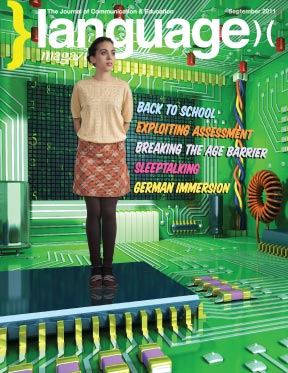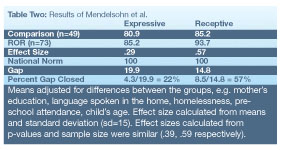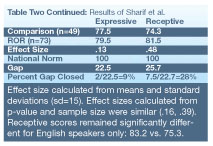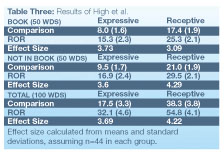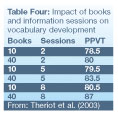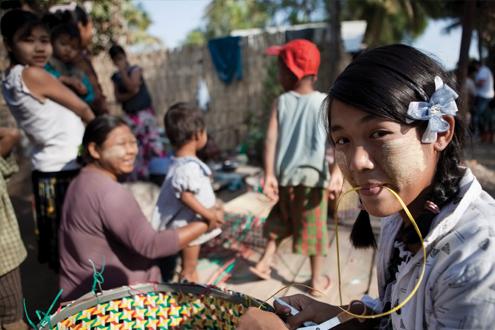
Here’s a cross section of TESOL Master’s Programs on offer
Never has it been more important to improve qualifications — So to help you choose the program that’s right for you, here’s a cross section of TESOL Master’s Programs on offer:
University of Alabama at Birmingham
UAB offers a M.Ed. in TESL with traditional and alternative tracks to provide a master’s degree and certification for teaching ESL in K-12 schools; its international track provides a master’s degree for teaching ESL/EFL to adult learners. This standards-based, learner-centered program combines online support with several course delivery formats: site-based professional learning communities, one-week summer institutes, Saturday classes, blended instruction, totally online platforms, field experiences, and internships. UAB’s ESL teacher preparation program produces research-based outcomes in collaborative mentoring and coaching. In 2002, the program became available to distance learners; it currently averages 35 graduates a year. Students and alumni teach ESL in one third of the school districts across Alabama, in schools and colleges in 11 states and 12 countries, and in programs ranging from rural community outreach to postdoctoral academic writing.
American College of Education
American College of Education is an online distance learning college offering flexible, affordable M.Ed. programs in Curriculum and Instruction with Bilingual or English as a Second Language specializations as well as concentrations and endorsements in both areas. The M.Ed. program can be completed in 18 months for only $6,950, with no GRE required. Graduates may use the knowledge gained for eligibility for state certification or endorsement. Full ESL endorsement requirements vary by state (IL, FL, GA, LA) and range from four courses at $2,320 to seven courses at $4,060. Bilingual endorsement requirements vary (IL, LA) and range from two courses at $1,080 to seven at $4,060. Educators should check with their respective state Department of Education for determining the endorsement requirements of their state. American College of Education is accredited by The Higher Learning Commission and is a member of the North Central Association of Colleges and Schools.
American University
TESOL Program at American University offers a variety of opportunities in TESOL and is distinctive due to its balance of theoretical and practical exploration. Students read and conduct research in the field of TESOL to inform their teaching practices; plan lessons; design assessments; and are present in English language learning environments from the beginning of their TESOL course of study. Program faculty draw on their extensive teaching, research, and multicultural experiences to provide guidance to students. The Program offers MA in TESOL (with a joint AU/Peace Corps option), Graduate Certificate in TESOL, BA/MA in TESOL, and M.A.T. and Certificate in ESOL tracks in conjunction with the School of Education, Teaching and Health. The program welcomes students on full-time and part-time basis and offers a limited number of Merit Awards. Our graduates in TESOL/Applied Linguistics work successfully in the U.S. and abroad.
Anaheim University
The online MA in TESOL degree program is taught in real time. The esteemed faculty includes world leading linguists and former TESOL presidents Drs. David Nunan, Kathleen Bailey, Denise Murray, Jun Liu and renowned linguists Drs. Rod Ellis, Ken Beatty, Andy Curtis, Martha Cummings and Fran Byrnes. Students contribute to online discussion forums and attend live weekly webcam classes. This accredited program, comprised of ten nine-week online courses and a research portfolio, can be completed in one to two years. Students also have the opportunity to meet their professors and fellow students in person at two four-day residential sessions, which are held annually in California and other locations around the world.
University of Arizona
The English Language/Linguistics program offers a 30 credit hour M.A. in English as a Second Language, focusing on applied linguistics, second language acquisition, and TESL/TEFL. The program balances theory and practice, and features courses on pedagogy, SLA theory and research, technology, applied English grammar, language program administration, cultural dimensions of SLA, and L2 reading/writing. Electives can be taken in many departments with specialized concentrations in language pedagogy or SLA; all students complete a capstone project. Students have opportunities to intern with the university’s nationally accredited Center for English as a Second Language and to participate in events put on by prestigious university programs like the Ph.D. program in Second Language Acquisition and Teaching (SLAT) and the Center for Educational Resources in Culture, Language and Literacy (CERCLL). Some M.A. credits transfer to the SLAT Ph.D. upon admission. Financial support and conditional admission are possible.
Biola University
The one-year graduate TESOL certificate (diploma) and the two-year MA TESOL programs are designed for Christian students looking for “professional preparation, contextual sensitivity, cultural appropriateness, and ethical service in the name of Jesus.” Novice teachers are invited to join the on-campus program in La Mirada, in the beautiful multi-cultural Los Angeles area. Experienced or in-service teachers can do the online program. The programs are both rigorous and practical, providing a strong theoretical base for teaching along with hands-on skills. Small classes enable students to have personal interaction with the faculty, all of whom have extensive experience teaching in international contexts. Required classes at the first-year/certificate level include linguistics, methodology, materials, pedagogical grammar, intercultural communication, second language acquisition and practicum. At the second year/MA level, required classes include testing and classroom research, along with electives in such areas as vocabulary, reading, writing, course design, and technology.
Central Michigan University
CMU’s MA TESOL program is a 30 credit program designed to prepare teachers for careers in TESOL in the U.S. or abroad. Students study the formal aspects of language, its acquisition and use, and gain knowledge and experience in current theories, approaches, and methods of language teaching and language assessment. The range of courses includes strong emphasis on connections among functional accounts of language, discourse and genre analysis, and pedagogy. In addition, the program provides students with practical experience to complement their studies of current theory. Through the program’s close ties to CMU’s English Department, Writing Center, and English Language Institute, students have multiple opportunities to work with language learners during their studies in the MA program. This includes one-on-one activities like tutoring, as well as classroom observation and practicum teaching placements. Graduate teaching assistantships are also available.
Columbia International University
The MA in TESOL program prepares professional teachers of English to speakers of other languages with a foundation in the theory and practice of English language teaching. The aim of the program is to prepare theoretically informed and practically equipped, competent, caring, and culturally sensitive ESOL teachers and leaders for domestic and international K-12 and adult classrooms. Upon completing this program, students will be recommended to receive ACSI certification in TESOL. Upon completion of the M.A. in TESOL, graduates will be able to teach in ACSI accredited K-12 international schools, overseas public or private K-12 schools and universities or language institutes, North American Christian schools, some public school districts, depending on state licensure requirements, and teach English at a professional level all over the world (in both English speaking and non-English speaking countries).
Concordia University
Concordia University, preparing teachers for the transformation of society for more than 100 years, offers a fully online, one-year Master of Education degree in Curriculum & Instruction in English to Speakers of Other Languages. The ESOL degree is designed to equip graduates with instructional strategies that promote learning for non-native English speakers, from elementary school through adulthood. The coursework capitalizes on the uniqueness of learners, focusing on creating vibrant learning communities. Concordia graduates are scholar-practitioners, learning and applying contemporary instructional strategies and tactics to their everyday practice, through rigorous and research-based study. New cohorts start every month; the one-year program is designed for working professionals, and coursework is structured to fit around their work and life commitments.
University of Central Missouri
The TESL Program at UCM is aligned with TESOL’s Program Standards. Courses challenge students to explore the structure of English, the acquisition of language, and the role of culture in learning; provide guided practice in planning, implementing, and managing English instruction and assessment; and encourage students to exercise professional leadership in their field, workplaces, and communities. One-third of the UCM TESL student body is international students, and another third is part-time students studying evenings and summers. Distance courses are offered in the surrounding area via interactive television. Upon completion of 21 credit hours of study within the 33-hour program, students who hold Missouri teaching certificates can add certification in K-12 ESOL.
East Carolina University
The MA in English with TESOL concentration prepares professionals for career opportunities in both the public and private sectors, including teaching and training (junior and four-year colleges and English as a Foreign Language overseas), teaching English for Specific Purposes (such as business English), and teaching and training in North Carolina public schools by those who already hold teacher licensure in other areas of expertise. Delivered by a team of specialists in applied linguistics/TESOL, discourse analysis, and sociolinguistics, the curriculum provides comprehensive training that meets the demand for competent professionals in the field. The TESOL concentration is designed to meet the needs of both working professionals and full-time students, and feature both online courses and campus evening courses. In addition, they offer a nine-credit Certificate in TESOL that can be completed entirely online.
Eastern Michigan University
EMU has been preparing TESOL professionals for over 30 years to pre- and in-service teachers from the U.S. and abroad. Current programs prepare graduates to work in K-12 through graduate and undergraduate endorsements in ESL, and to work worldwide through the TESOL Minor (24 credit hours) and MA-TESOL (33 credit hours). Professors are long-term TESOL professionals who all teach ESL as a regular part of their course load. Supported by the Intensive English Program, TESOL courses at EMU provide students with opportunities for practical hands-on experience teaching international students in Michigan and abroad.
The latest offering, the Peace Corps Master’s International in TESOL, incorporates 27 months of Peace Corps service into the standard MA program. Applications are accepted for January or August admission.
Emporia State University
ESU’s online TESOL program is designed for both in-service and pre-service teachers seeking to better serve their English learner students. Offering a Master of Arts degree as well as a Licensure program, ESU offers training for busy professionals around the world via online classes taught by faculty members who are actively engaged in conducting research in the field. Since 2001, the TESOL Licensure coursework model has been the core of $6 million in federally funded professional development grants to provide training for in-service teachers in high-need districts in Kansas.
University of Findlay, Ohio
UF has been at the forefront of the international education field for more than two decades, having founded its MA in TESOL and Bilingual Education program in 1989. Students may choose from three different tracks: Master’s in TESOL/Bilingual Education, 36 hours; Master’s with Endorsement (for licensed teachers), 36 hours; Endorsement Only (for licensed teachers), 21 hours. Findlay prides itself on personalized attention, and offers small classes that include hands-on, practical experiences both in the classroom and in the community. Students, both international and American, gain teaching experience in UF’s Intensive English Language Program, overseas affiliated institutions (Peru, Japan, Korea) and local kindergarten-12 schools. The endorsement program allows licensed teachers to increase their marketability. Findlay graduates become expert teacher-practitioners and often serve as leaders within second or foreign language/bilingual programs. Many master’s graduates go on to study at the doctoral level.
University of Iowa
The University’s Department of Linguistics offers a two-year M.A. program in linguistics with a three-course TESL focus. In addition to the core curriculum in phonology, syntax and field linguistics and typology, the TESL sequence includes a methods of teaching ESL course, and a practicum course of supervised ESL teaching. The Department of Linguistics has particular strengths in phonology, syntax, and second language acquisition. Students who have completed the TESL focus are eligible in the second year for assistantships in ESL teaching. The M.A. in linguistics with ESL qualifies the graduates for teaching ESL at universities in the U.S. and abroad. M.A. graduates are highly successful in finding teaching positions.
Lincoln Christian University
The MA TESOL at LCU is completely online and is designed to fit the schedules of working adults. This 33-credit-hour program consists of 11 classes, including a 100-clock-hour Practicum experience and a capstone research course. Students generally take one class at a time, each of which lasts seven weeks. All activities are asynchronous to accommodate time zone differences. Classes run year round, so those who go straight through the program can complete the MA in 21 months. New cohorts begin each fall and spring and there is an online training course before each start. The class sizes are small, with no more than 18 students in any one class. Current students are living and teaching in 13 different countries, making the discussion forum interaction rich and full. As a faith-based institution, classes are taught from a biblical worldview.
Madonna University, Livonia, MI
The MA in TESOL at MU is a graduate program designed to educate and train teachers of English as a second or foreign language. The program offers sound foundations in theoretical and applied linguistics, educational theory and practice, as well as in cultural aspects of language learning, teaching, and assessment. Many courses are offered partially online. Students choose to concentrate either in K-12 (33 semester hours) or adult/post-secondary ESL/EFL education (32 semester hours). K-12 track students are eligible to take the State of Michigan test for the ESL endorsement. The program is approved by both the State of Michigan and NCATE/TESOL.
University of Mary Washington
UMW’s graduate programs in TESOL are designed to prepare skilled, reflective, and responsive teachers in this rewarding teaching field. Offered through the College of Education, several programs are available which lead to an MEd degree (36-46 credits) or a certificate (17-18 credits). Students in these graduate programs gain the knowledge and skills to effectively support English language learners through research-based techniques appropriate across a variety of instructional contexts, including PreK-12, adult, and higher education. The University is in Fredericksburg, Virginia, where graduates of the programs in ESOL instruction are in high demand.
University of Maryland, Baltimore County
UMBC has been preparing TESOL teachers since 1979. Its instructional staff of Drs. JoAnn Crandall, Sarah Shin, John Nelson, Chuck Hodell and Ron Schwatz are widely known in the field, both nationally and internationally. Today the program has more than 120 students in its MA, Certificate and Cohort programs. All classes are offered online as well as face-to-face. Students can take courses on a full-time or part-time basis. For face-to-face students, classes are offered in the early evenings to accommodate students with professional obligations. Program options include taking an MSDE recognized certification internship, and also preparing a thesis by doing original research in the ESOL field.
University of Memphis
The English Department at UOM offers a variety of TESL training programs for those interested in teaching ESL in the US or abroad. The program addresses students’ varying needs and professional goals. Students may complete a BA or MA with a concentration in ESL, and the MA may be completed entirely online. The PhD in Applied Linguistics program prepares future researchers or teacher trainers. Finally, for training beyond the BA, students may choose the 15-credit-hour graduate certificate program in TESL/TEFL, which may also be completed online. Students in all programs have the possibility of gaining undergraduate or graduate credit while working in ESL summer institutes in Pilsen, Czech Republic, and Alicante, Spain. Graduates of the program work in K-12 schools, intensive institutes, and institutes of higher education in the U.S. and abroad.
Minnesota State University, Mankato
The TESL program at MSU has three credential options: MA, Graduate Certificate, and K-12 licensure.
The 34-credit MA program is designed for both native and non-native speakers of English, preparing candidates for employment in teaching, program administration, and curriculum development. A capstone project in the form of a thesis, an alternative-plan paper, or a teaching portfolio is also required.
The 24-credit Graduate Certificate prepares candidates for careers in teaching English as a second or foreign language to adult learners in the U.S. and abroad. 25-graduate credits plus an additional 30 credits in education prepare candidates for teaching ESL to K-12 students in U.S. public schools.
The coursework for these programs develops candidates’ knowledge of how the English language operates and the skills required to teach it effectively. All TESL-licensure courses and some of the MA and GC courses are available online.
Monterey Institute of International Studies
The MATESOL and MA in Teaching a Foreign Language (TFL) programs feature an applied creative curriculum that is distinguished for its solid foundation in the fields of linguistics, language pedagogy, and applied linguistics research. This curriculum is combined with practical experience, a collaborative academic community, and strong career development, ensuring that graduates are well prepared for international careers as language teachers, curriculum developers, language program administrators, and teacher trainers.
The expert faculty serve as leaders on local, national, or international language teaching organization boards and committees, while sharing their expertise with students. The optional certificate programs in Language Program Administration (LPA), Computer Assisted Language Learning (CALL), TESOL or TFL give students the unique opportunity to gain additional skills and expertise that set them apart in the professional world.
The New School
The New School in New York City offers an innovative master’s program in TESOL that can be completed online, on campus in Greenwich Village, or in combination. The program enables students to receive professional training in one of two specialized areas, teaching or curriculum development. Dynamic class discussions are led by renowned TESOL scholars, including Scott Thornbury, Radmila Popovic, Jeremy Harmer, and John Fanselow. The New School is known for its commitment to civic engagement and the development of creative solutions to global issues. New School students understand the importance of effective communication in business, politics, nonprofit management, and education. Some have taught TESOL; others are ready to launch new careers in a field that allows them to help others and work across borders and cultures.
University of North Dakota
UND offers a fully online accredited Master’s in ELL Education that immerses students in an international community of learners committed to improving English language education for children and adults worldwide. Through courses and practicum experiences, students gain both the theoretical and practical knowledge they need to understand the complex linguistic, educational and cultural variables associated with teaching English learners. Flexibility in assignments allows students to prepare themselves to teach in a wide variety of English language settings. Students will work closely with a faculty advisor during their final semester in completing a scholarly project based upon their interests. The affordable program offers two courses per semester, allowing working professionals to complete the degree in two years. Completion of the degree will fulfill ELL endorsement requirements in many states, as well as provide a solid credential for those seeking international English teaching employment.
Northcentral University
The M.Ed. in ESL is an in-demand, 30-credit specialization that can be completed entirely online through NU’s distant learning environment, where faculty mentors interact with students one-on-one. The degree provides students with the skills needed to understand learning theory, apply appropriate instructional strategies, and integrate technology for working with diverse student populations. The program aims to produce graduates who understand the scope, pace, and magnitude of the transformation of education within the world; and to assist students to meet the challenges of state and national standards, while meeting the learning needs of educators who work beyond the classroom. NU uses a personalized teaching model wherein students and mentors interact asynchronously during a course to achieve learning outcomes. Mentors function as instructors, facilitators, guides, consultants, and evaluators. NU is accredited by The Higher Learning Commission and provides students with an affordable, flexible way to meet professional and educational goals.
Northeastern Illinois University
NEIU is the most diverse public university in the Midwest and has a long history of preparing professionals in TESL who work in the Chicago area and beyond. With its main campus located on Chicago’s northside, the university offers a specialized master degree program in the field which has been aligned with the professional standards of the TESOL Intl. Association. Additionally, courses at both the undergraduate and graduate levels are offered leading to an endorsement in teaching ESL public schools in the State of Illinois.
Northern Arizona University
The degree programs at NAU prepare for a career as a bilingual or English as a Second Language teacher, bilingual or ESL resource teacher, or a teacher responsible for providing second language instruction and support in the regular classroom. Students can take classes on campus and online, or complete the entire program online from anywhere in the world. There is a growing demand for educators in the field of bilingual and second language education, which can help students secure a position as a specialist in these fields or fulfill state endorsement requirements for working with second language learners.
University of Northern Iowa
Located in a welcoming and safe community, UNI’s TESOL program offers a challenging educational experience that helps students achieve their career and scholarly goals. Balancing theory and practice, the program also offers many opportunities for international internships. Graduates of the program teach in the U.S. and abroad or work in a variety of businesses, other professions, and the arts. Many also go on to doctoral programs in fields such as linguistics or educational leadership. A Master’s Program in TESOL/Modern Languages is also offered, with a choice of Spanish, German or French. This program requires proficiency in the other language and is an excellent way to broaden horizons.
Ohio Dominican University
The MA in TESOL at ODU is designed for those seeking to expand their knowledge, skills, and dispositions for TESOL. Based upon national standards for ESL teacher education programs, the program balances research with practice in an adult-friendly format. Candidates take 11 courses for the MA, and they complete 100 hours of field experience before taking the practicum or student teaching. Through coursework and a thesis or project, candidates are also prepared to do advanced work in TESOL if they so choose. By passing one additional course and the Praxis II exams, candidates qualify for the TESOL Multi-Age License in Ohio. ODU also offers TESOL endorsement to holders of teaching certificates or licenses, and all endorsement courses count towards the MA. Graduates of the program have been very successful finding work in the field.
University of Oregon
The MA in Linguistics with a Language Teaching Specialization (LTS) is a unique 15-month (5 quarter term) program designed for the second or foreign language teacher. Students may specialize in English teaching (ESL/EFL) and/or the teaching of other languages (Chinese, Japanese, Korean, German, Spanish, Persian, etc.) in collaboration with other language departments (East Asian Languages & Literature, Romance Languages, the Northwest Indian Languages Institute, and the World Languages Academy). One of the primary goals of the program is to prepare leaders in international education and language teaching, with a focus on technology in teaching, proficiency-based testing, and the adaptation of research-based principles and methods to fit a variety of language learning situations. Students prepare a final applied project for a “real” teaching context.
Pepperdine University
Advancing your education and subsequent career in teaching English learners is even more attainable now that Pepperdine University offers a master’s degree in this specialized field. At Pepperdine’s nationally recognized Graduate School of Education and Psychology, candidates can earn a M.A. in Education: Teaching English to Speakers of Other Languages (TESOL) – in just one year.
Pepperdine’s TESOL program convenes at the Irvine Campus in Orange County, and begins a new cohort each fall.
Saint Michael’s College, Vermont
The MA TESOL program at Saint Michael’s College is one of the oldest in the U.S. It can be completed in one calendar year and is surprisingly affordable, with tuition below $20,000 for the entire program.
Coursework blends theory and practice in order to best prepare students for careers in teaching in the U.S. and worldwide. First, students learn theories about the teaching of English as a second or foreign language in the classroom. Then, they apply what they have learned by working directly with ESL students at the college, with immigrants and refugees in the Burlington area, or with children in the Vermont school system. Students may also take courses and do practice teaching in other countries.
SMC facu lty are well-known in the fields of TESOL and Applied Linguistics for developing bridge programs, assessment tools, and curricula.
San Jose State University
SJSU has offered TESOL courses since the 1960s. In addition to the MA in TESOL, the Department of Linguistics and Language Development offers an undergraduate and graduate certificate in TESOL. With a solid foundation in pedagogical grammar, teaching methods, language acquisition, curriculum design, intercultural communication, pragmatics, as well as linguistics, graduates go on to teach in intensive English programs, community colleges, adult education programs, and universities in the U.S. Many teach EFL abroad, while others find employment teaching and designing curricula in English for Specific Purposes in Silicon Valley. Some pursue PhDs in applied linguistics and related programs elsewhere.
Shenandoah University
Shenandoah offers programs of study leading to a graduate degree (MS Ed TESOL) and certificates in Teaching English to Speakers of Other Languages. Drawing on best practices for online distance teacher education, our program serves those students seeking professional development and who now (or hope in the future to) work in English language teaching worldwide in a variety of programs in K-12, university or college level and adult education programs.
University of the Southwest
The University’s degree in Curriculum & Instruction: TESOL is designed for aspiring TESOL teachers who are not bilingual. All of the coursework is completed through distance education. Students acquire an in-depth knowledge of TESOL best practices, current research, program and curriculum development techniques, relevant legislation, and other appropriate content.
TESOL Certification
American TESOL Institute
American TESOL certification courses are designed to get students working as quickly as possible. Whether in a traditional classroom setting or online, TESOL courses and certification take from 80-200 hours. Following that, ATI offers support with job placement abroad. The demand for English teachers with TESOL certification is growing faster than the number of graduates.
The internet is revolutionizing education, and a popular option is to take TESOL courses online. For people who live in remote locations or who work during the day, the option of learning at home is always welcome. Once the certification is completed, students will be knowledgeable in the theories of TESOL, and be able to present a lesson plan in the classroom.
The Institute offers the opportunity to earn college credit, get certified, and teach English abroad. Recent graduates, people changing careers, or people contemplating a few more years of working before retirement are all perfect candidates to take TESOL courses.


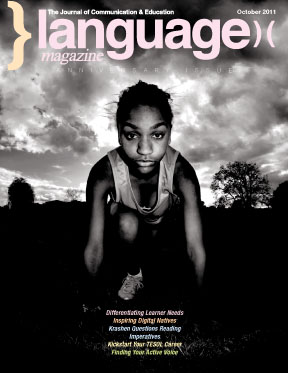
 About the Turkish language
About the Turkish language




